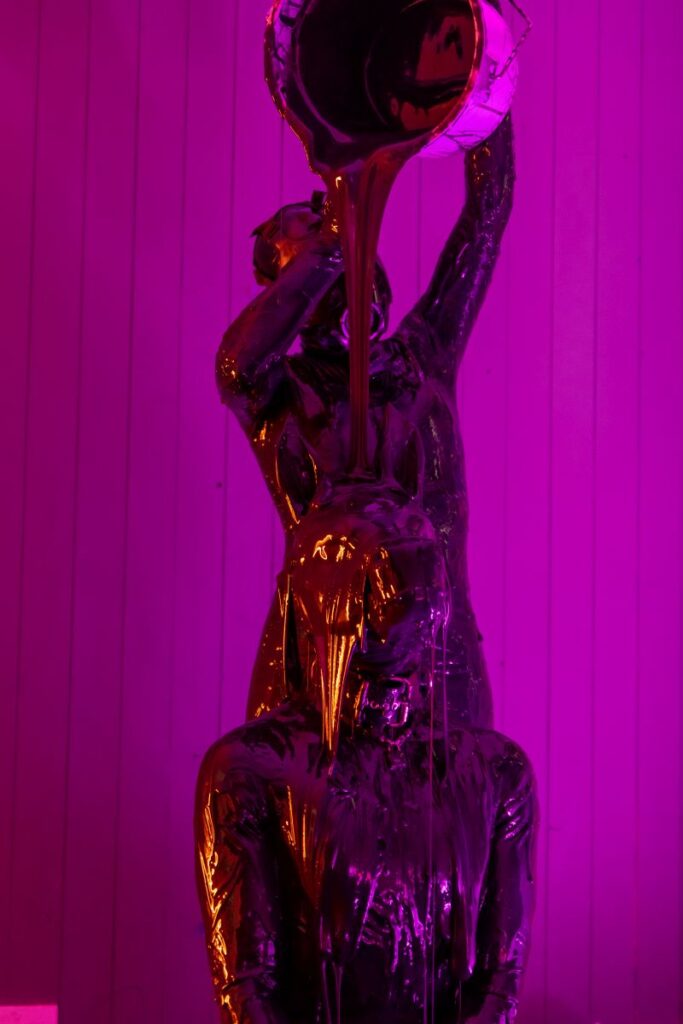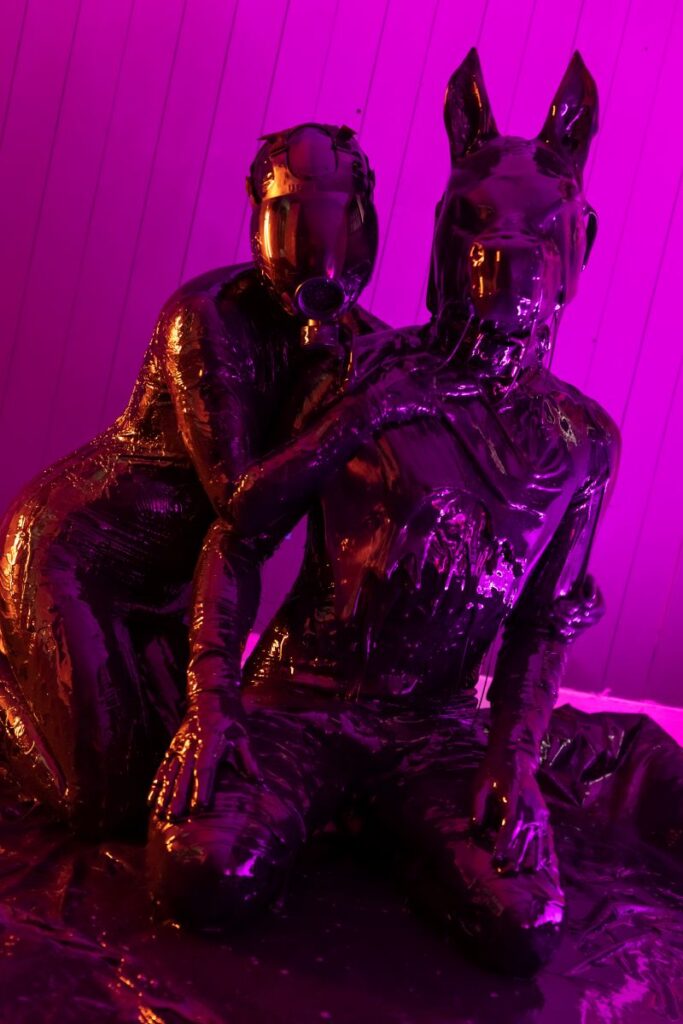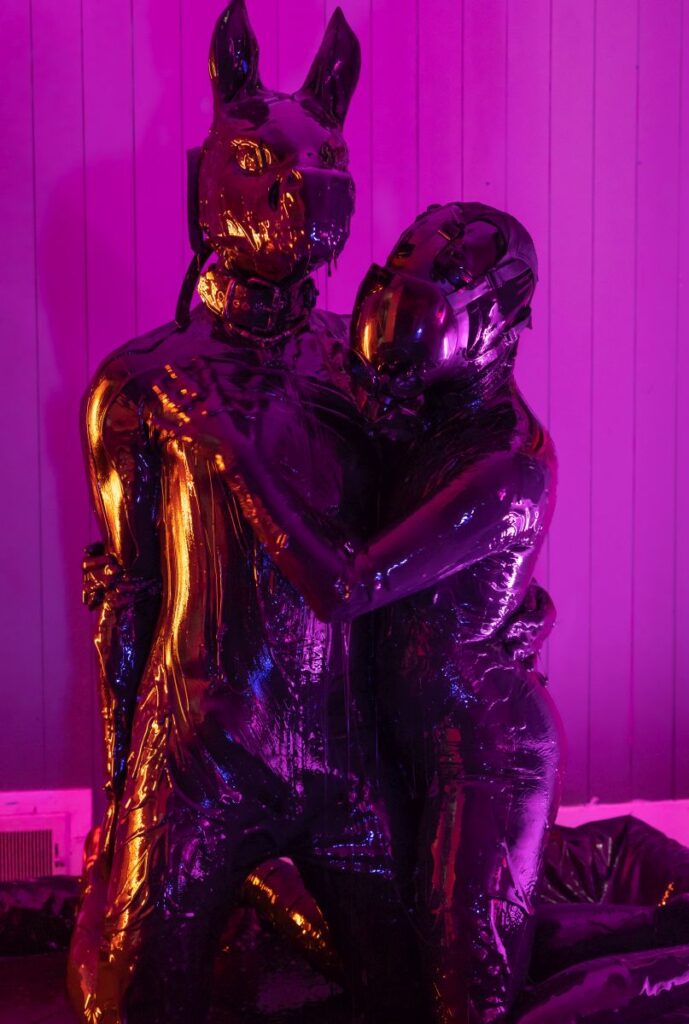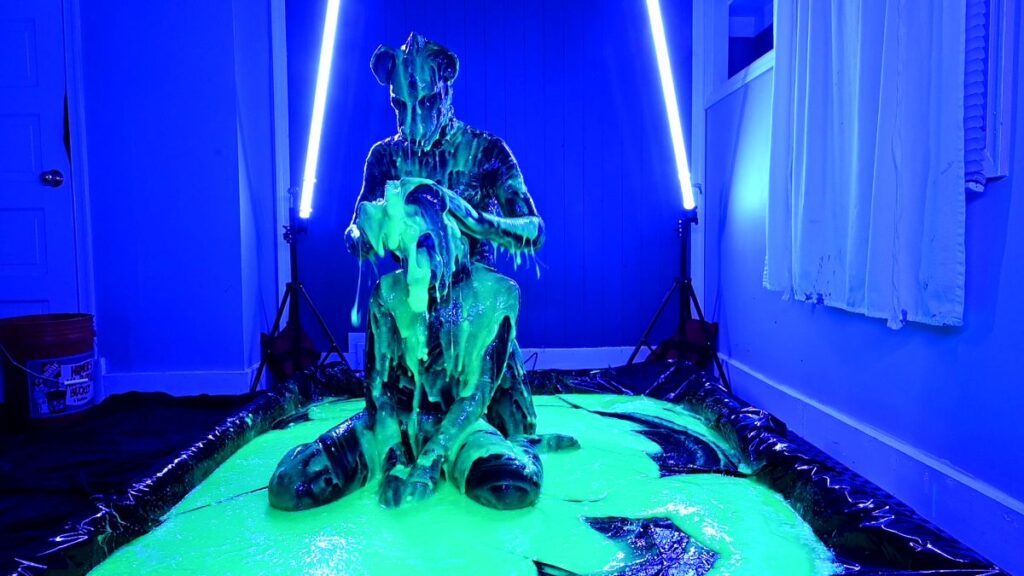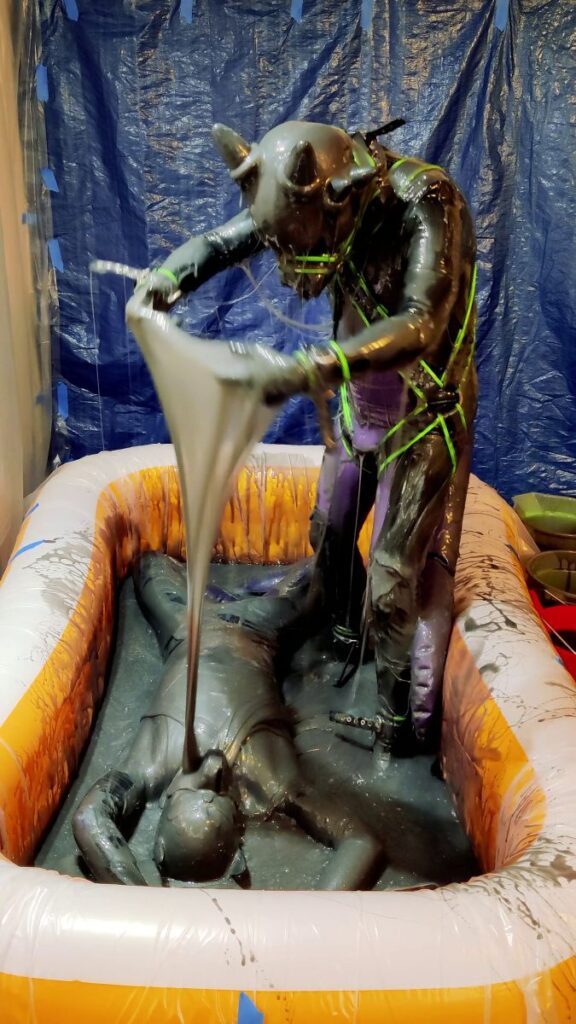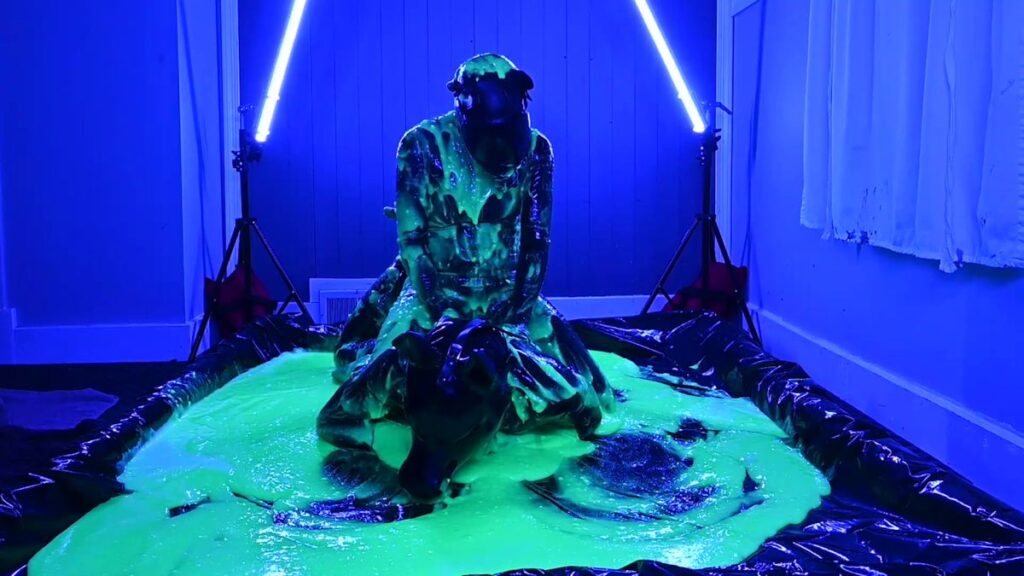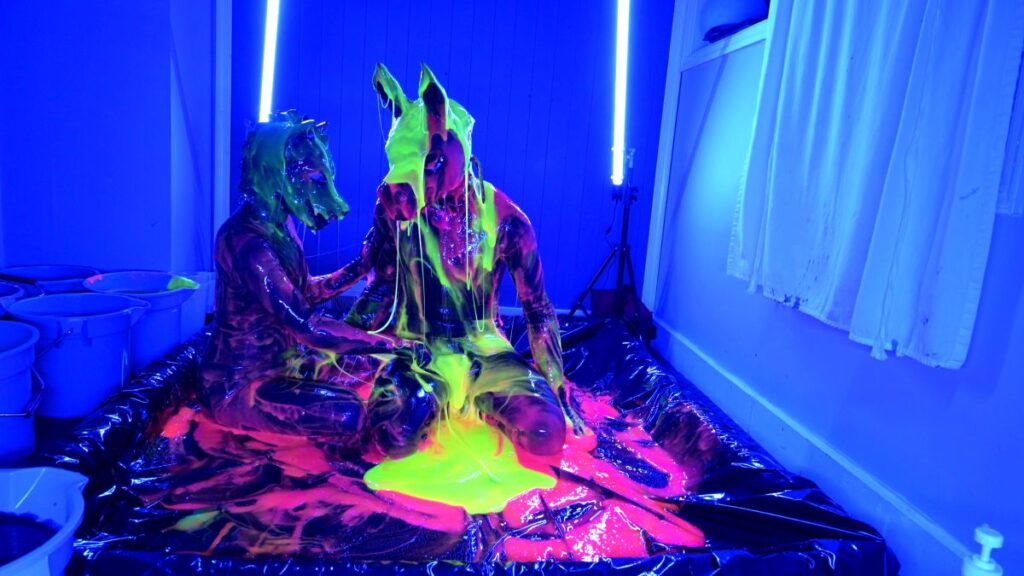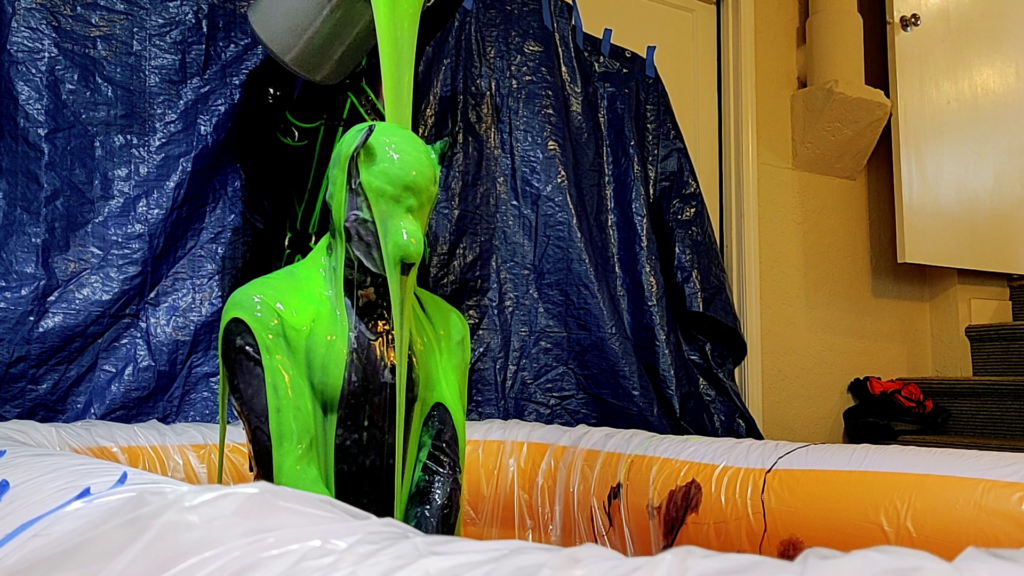
Ingredients
- 150g-170g Tylose HS 100000 or 60000 HEC (hydroxyethylcellulose)
- Note from Indigo: The brand of HEC does matter for this one! Natrosol, the other common HEC type, saturates more slowly and doesn’t bind to the K-Lube in the exact same way. Do a test before making a large amount!
- 5-10g K-Lube
- 10L warm water
- paint or pigment to color
Directions
- Measure out the HEC and K-Lube, add together, place in the bottom of the mixing container, if the pigment is powder add it at this time also, I use about 3g of pigment powder for 10L
- In a DIFFERENT bucket, measure out 10L of warm to hot water. If you’re using liquid paint for color, you can add it to this bucket and mix it now.
- Get mixer ready
- Quickly add the water to the mixing container
- Mix, be sure to get all the powder mixed in, it should take about two minutes
- If using paint to color, and if you haven’t added it already, add it now
- Let thicken, could take about 30 min. You don’t need to be mixing for this long, typically this gunge thickens in 3-5 minutes and then sets after 30. Once you notice the mixture thicken you’re good to let it sit.
Notes
- This isn’t an exact science, depending on the quality of HEC you may adjust. The more HEC, the thicker it will be, the more K-Lube, the more stringy it will be, figure out what works for you.
- If you are having issues with clumps, you may need to reduce your water temperature. HEC sets more quickly in hot water.
- You can get hotspots in the gunge, be sure to test it with your hand before dumping it on someone.
- The K-Lube makes the gunge SLICK, be very careful cleaning up.
- This is safe for latex, but the pigment can stain, be careful depending on the color of your items.
- You can make this look and feel like grease if you cut the water to 5L, but mixing becomes more difficult.
Video Demo
Note from Indigoo: I do it slightly different than Rye describes in the directions, instead preferring to sift the powder in to the water bucket as I’m running the mixer. Both methods are basically the same, the key is to get the water moving as soon as the powder is added. Pick the version that works for you! I’ve also included a comparison of how long treated vs. untreated HEC takes to set. If you’re getting too many clumps, you might need to adjust your water temperature.
Clean Up
The clean up is not bad but you will need a lot of water to thin it out and break the surface tension. Most of the time what I do is scrape off as much as I can into buckets. From there I get into the shower to clean myself, using a gift card to scrape off the slime while running it under water. After I get cleaned up I will thin out the slime in the shower keeping the watering flowing the whole time as I clean the buckets. After all the slime is washed down the drain I will keep the water running for about 5 minutes to ensure the drains are clear.
